The annual Festa del Redentore reminds us that Venice was very vulnerable to plagues. Even after it ceased to be the principal port of entry for European imports from the East, its position at the head of the Adriatic made it a bottleneck for trade. Ships laden with the treasures of the East also carried disease. And once the infection reached Venice, its densely-populated islands were an ideal environment in which it could spread.
A particularly bad outbreak came to an end in 1576. To commemorate the end of the ordeal, and to give thanks for deliverance, the Venetians commissioned the church of the Redentore (Redeemer) on the island of Giudecca. It is a very fine Renaissance neo-classical church by Palladio – indeed his finest according to some grand tourists, including the Palladio enthusiast William Beckford.
At the church’s inauguration in 1577, the Doge processed there on foot, crossing the basino on a bridge of boats lashed together, and attending a mass. This became a tradition: once a year in July, the Venetians would build a bridge of boats tied together across the Giudecca canal to the Church of the Redentore, parade across, hold a thanksgiving service, then have a party.
The festival is still observed today, with perhaps slightly more emphasis on the party aspect. On the Saturday evening Venetians all come out and have dinner in the open, whether on boats, at hugely expensive white-tie restaurant dinners, or at communal tables set up in every neighbourhood piazza. Then there is a massive fireworks display just before midnight.
We went to Venice in 2017 to see the festival, and found accommodation in a small hotel on Giudecca, which placed us near the heart of the action.
The formal opening of the bridge was on the Saturday evening. When John Julius Norwich was writing his magnificent A History of Venice (published in 1982) he noted that the bridge had been discontinued in 1970 because of the requirement for cargo vessels to access the port of Mestre. Fortunately the tradition has been revived, although these days the bridge of boats has been replaced by a pontoon bridge which looks like the sort of thing army engineers would throw up to get an infantry division across a major river. Just as well, because after the speeches by various civil, military and religious officials, people started marching towards us across the bridge in truly awesome numbers.
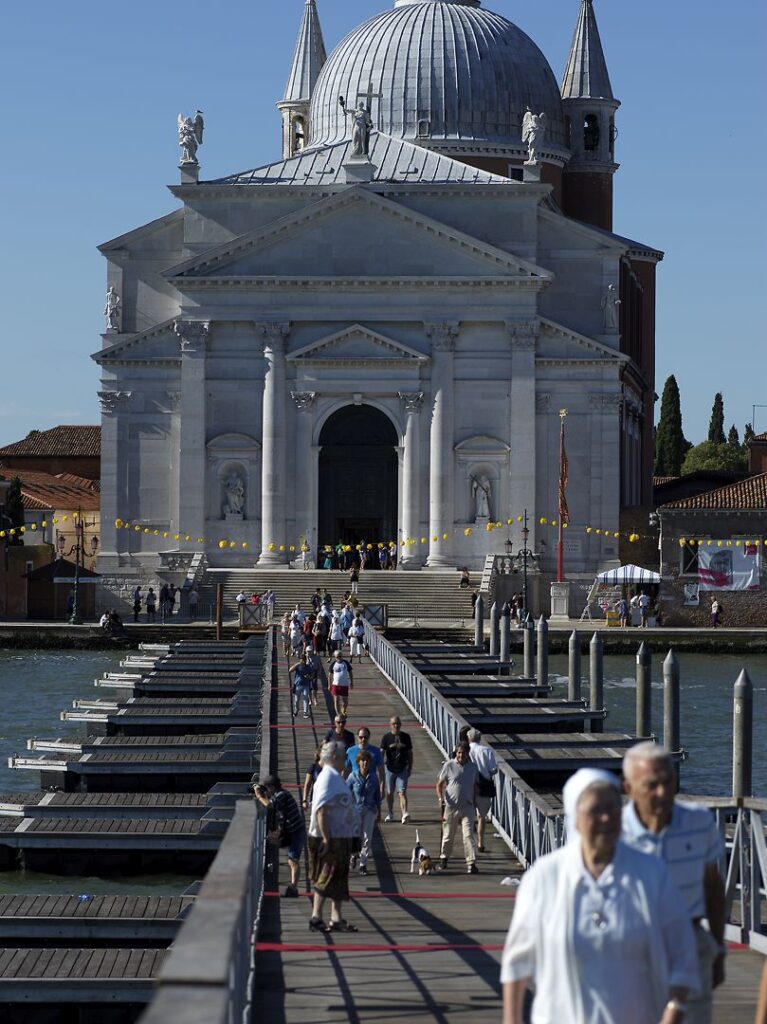
Unfortunately the Redentore has become part of the international youth party itinerary, like the Running of the Bulls, and it did seem a bit as if we had wandered into a Melbourne New Years Eve rave party. But the fireworks were extraordinary. I was not going to bring my Hasselblad out into the rave party so we just took photos on our phones. Lou took the best one, which I reproduce below. The fireworks illuminating the distant dome of Santa Maria della Salute remind me of the famous photographs of St Paul’s in London during the Blitz.
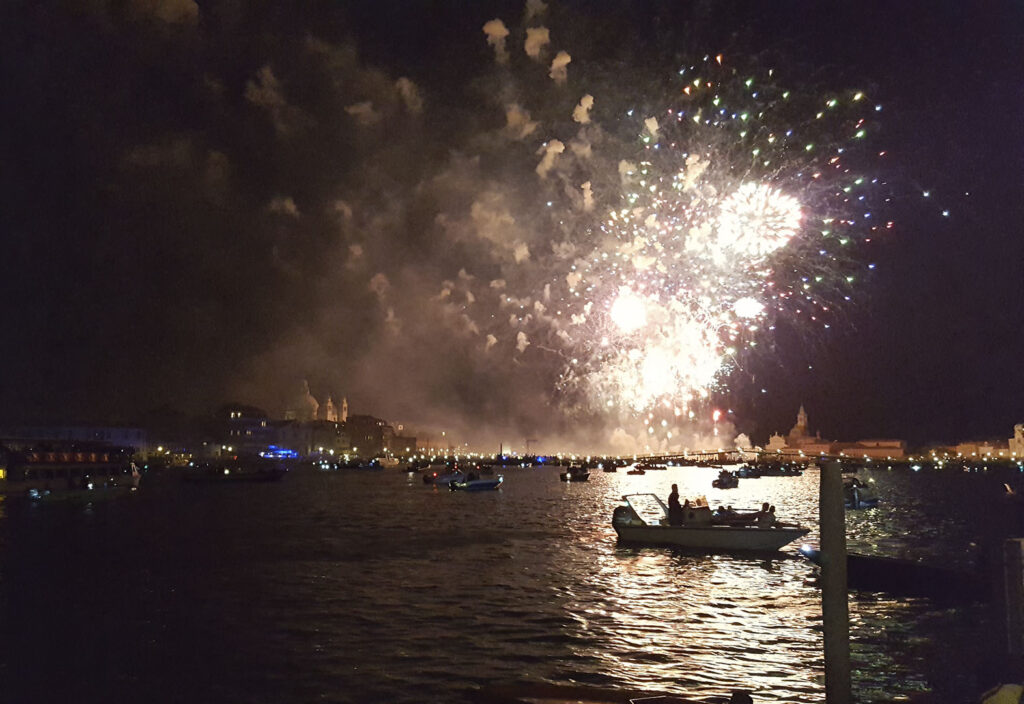
Sunday dawned beautiful and sunny, and not too hot. We went out and walked across the pontoon bridge to Dorsoduro – it was considerably less crowded than the night before, doubtless because all the party dudes were sleeping off their excesses, and the atmosphere was of a jolly family day rather than a doof-doof rave party. The main public areas had mostly been cleaned up first thing, and the people who had had their own street parties had done their own cleaning up.
After wandering around for a bit we found a very nice restaurant called Trattoria Altanella close by on Giudecca with a terrace by the water to have lunch. Being “proper” Venetian the menu was mainly seafood – I had grilled octopus followed by bigoli (sort of thick spaghetti) with an anchovy and onion sauce. Lou had sardines in saor followed by squid-ink pasta with zucchini and shrimps. The proprietor gave us a postcard showing a photograph of the same restaurant a hundred years ago (it actually started in the 1880s). It has always been run by the same family, and the proprietor’s son is in training to take over.
Later in the afternoon we went out to see another traditional part of the Redentore festival – the gondola races, or in the local dialect, the “regatta” – yes folks, another Venetian word that has found its way into English, along with “arsenal”, “admiral”, “ghetto” and many others.
We made our way to the bridge from which we had watched the fireworks, and it being much less crowded, I set up my Hasselblad on a monopod. A bright orange boat was tied up alongside – young people in Aperol t-shirts and hats were handing out Aperol spritzes, and there was a very competent blues trio on board as well.
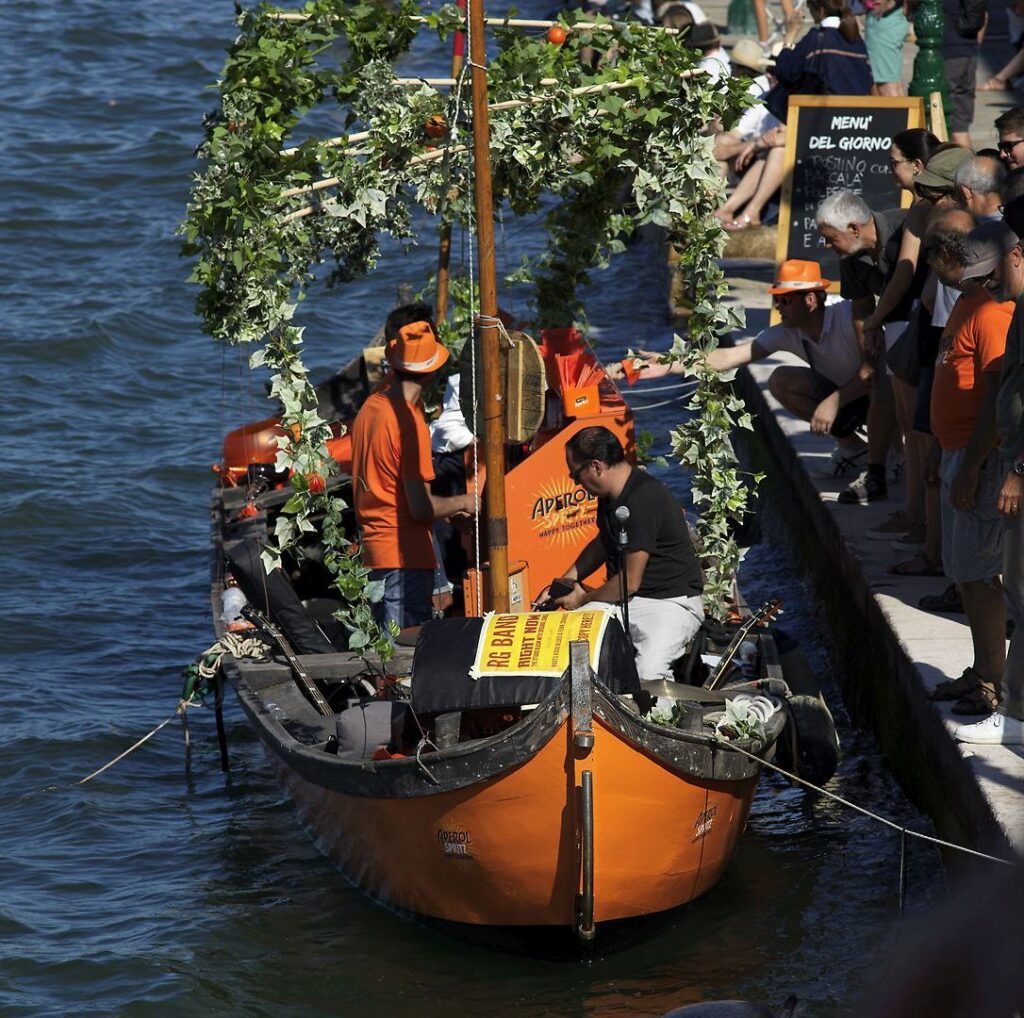
Everything was very busy. There were the expected sorts of announcements over a PA – “would all contestants in the next event please report to the stewards’ boat” – and a couple of cops on jet-skis were having great fun patrolling the course, occasionally stopping to explain to onlookers on the shore that no, this was very serious and not as much of a lark as it looked.
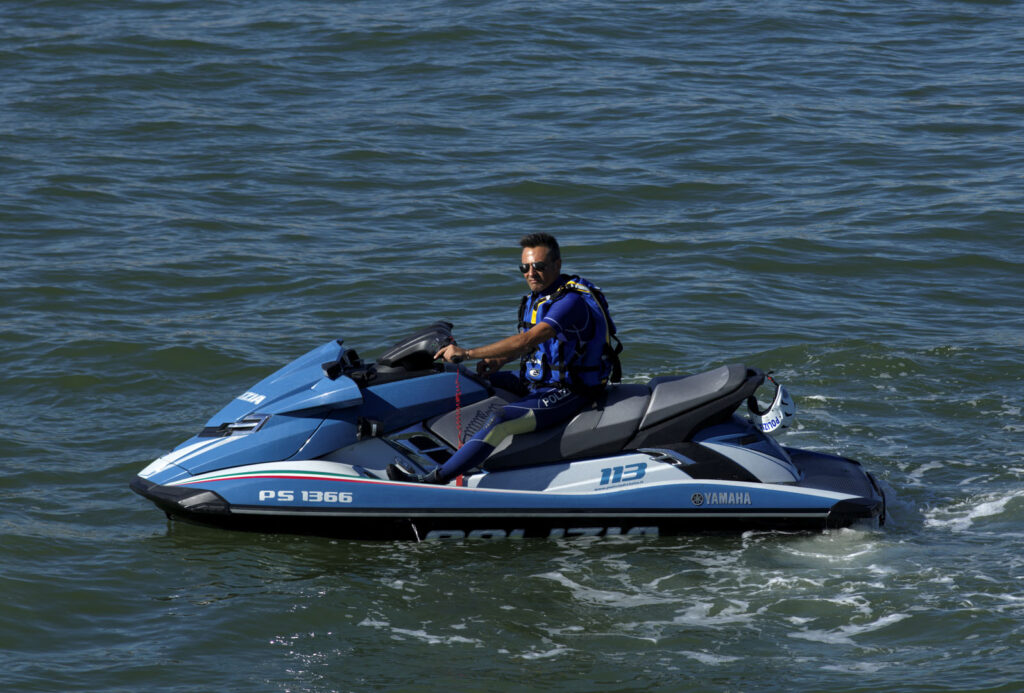
We arrived in time to see the conclusion of the penultimate event – the race for pupparini which are a sort of a light skiff rowed by two people. Like gondolas though, they are rowed with one oar per rower, standing up and facing forward, so the strength comes from pushing with the legs and arms rather than pulling with the legs and back as with rearward-facing rowers. Each boat was a different colour and the red boat won, to great applause.
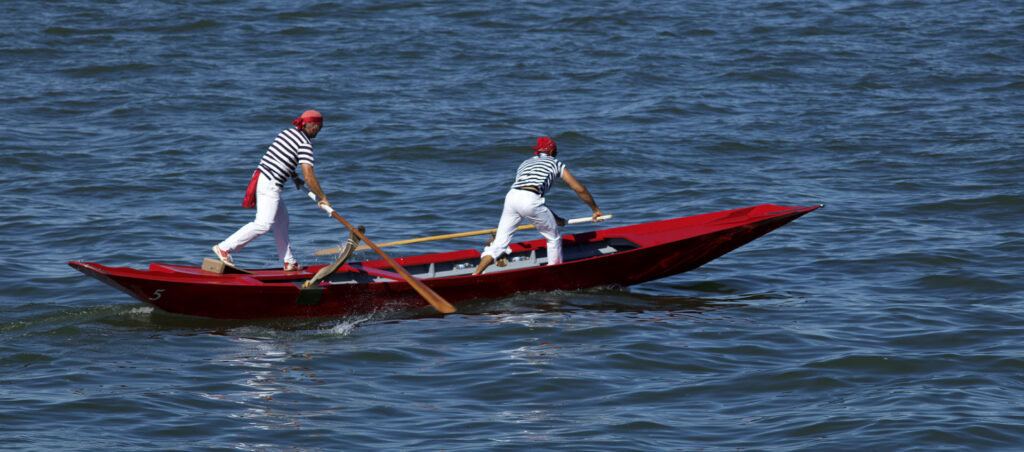
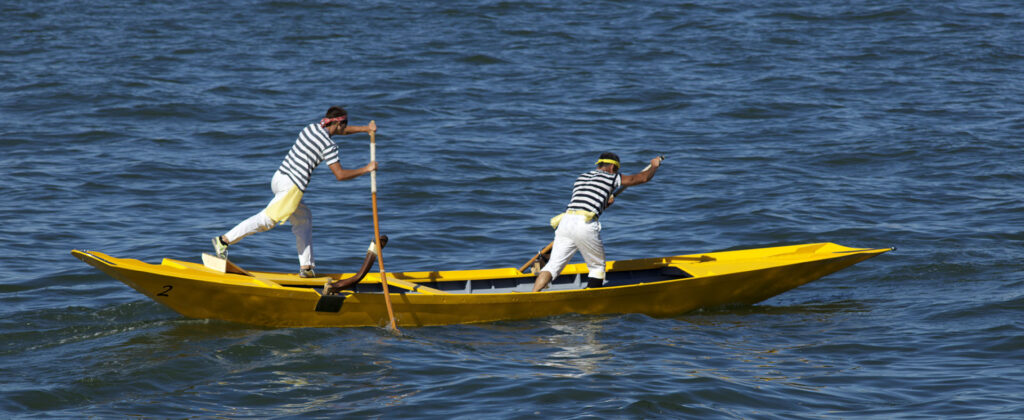
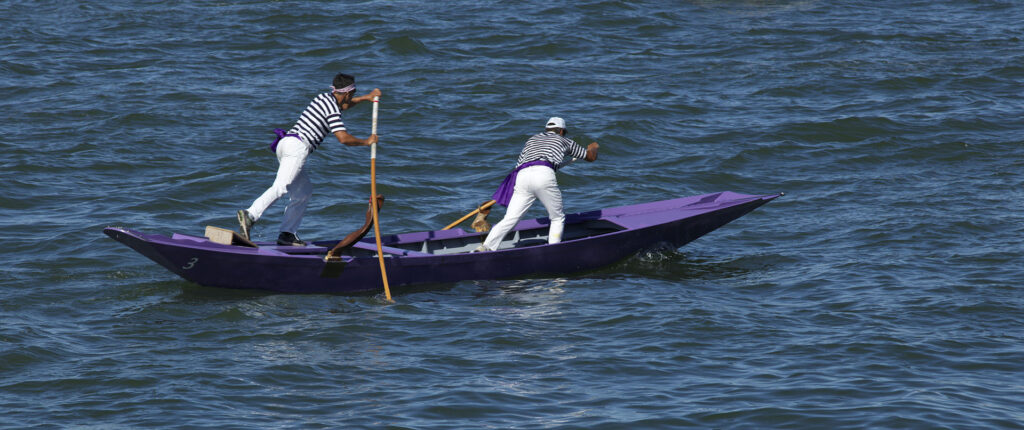
The winning team then came down the fondamenta, to cries of “bravi! bravi!” and were rewarded with a couple of spritzes, which they drank while continuing to row one-handed.
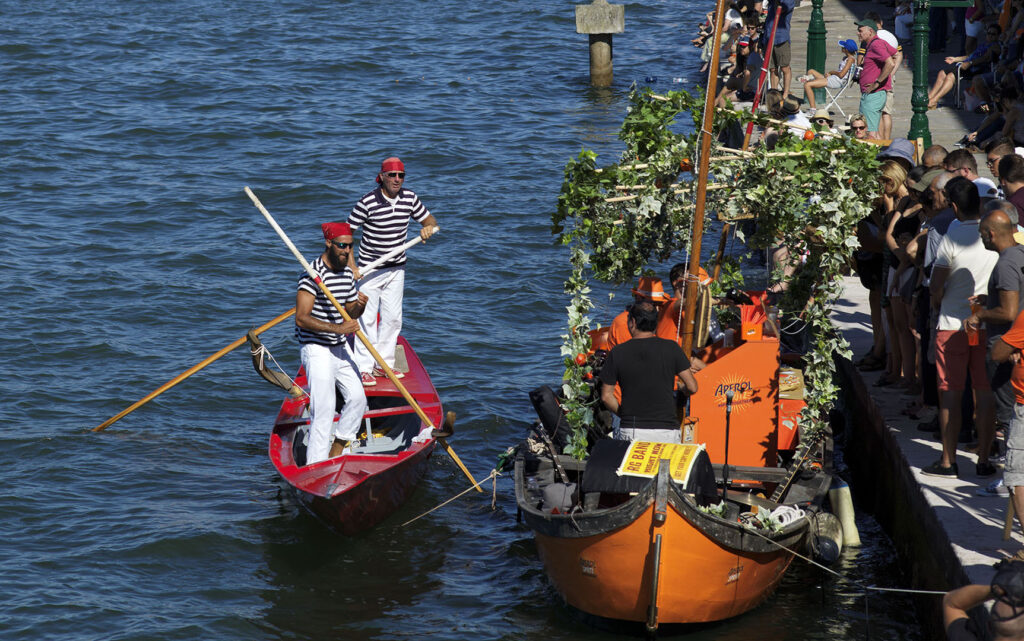
Then the rowers of the orange boat realised that, despite not actually having come anywhere in the top three, theirs was about the same colour as the Aperol boat so with a bit of fast talking they could probably get a couple of the young Aperol ladies on board with them, which they did, to much cheering and waving.
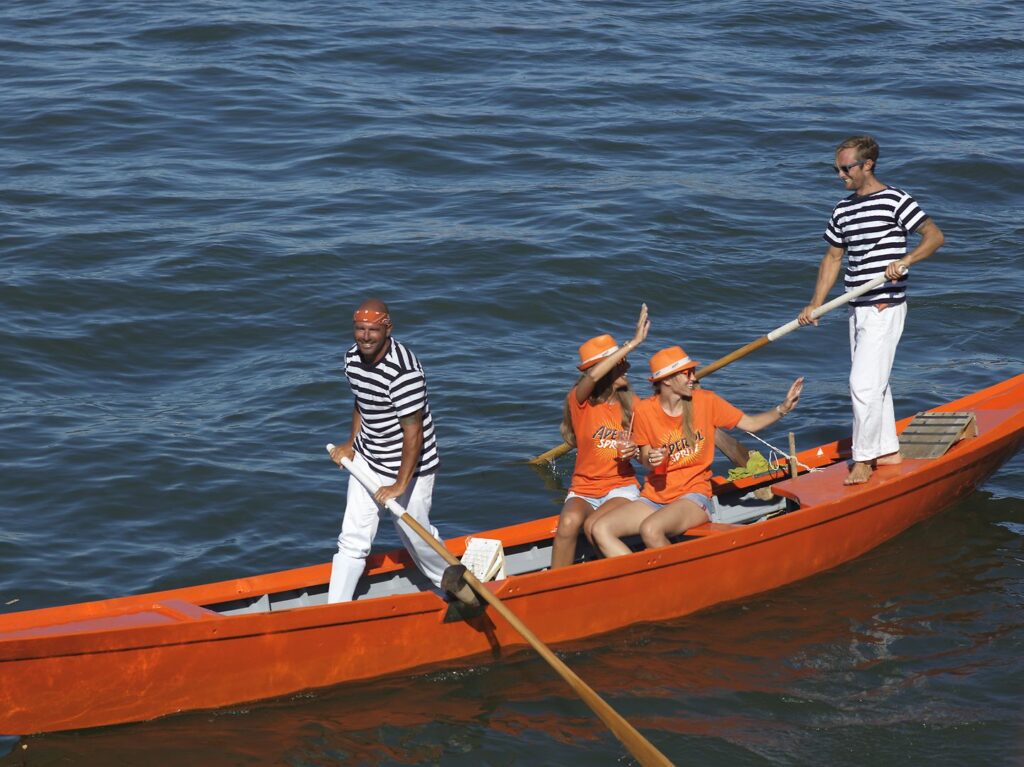
All that though was just the preliminary to the final event – the race between proper gondolas, albeit stripped down to the minimum and once again painted in bright colours. The course was from the front of the Church of the Redentore to the western end of Giudecca and back, which at a very rough estimate I would put at six kilometres. They lined up, someone fired a gun, and off they went. Lou decided that we were barracking for the pink team, and sure enough they led as they came past. A terrific flotilla of small boats followed alongside as they disappeared around to our left. After a while an announcement came that the pinks had still been in the lead at the halfway point (cheers and applause).
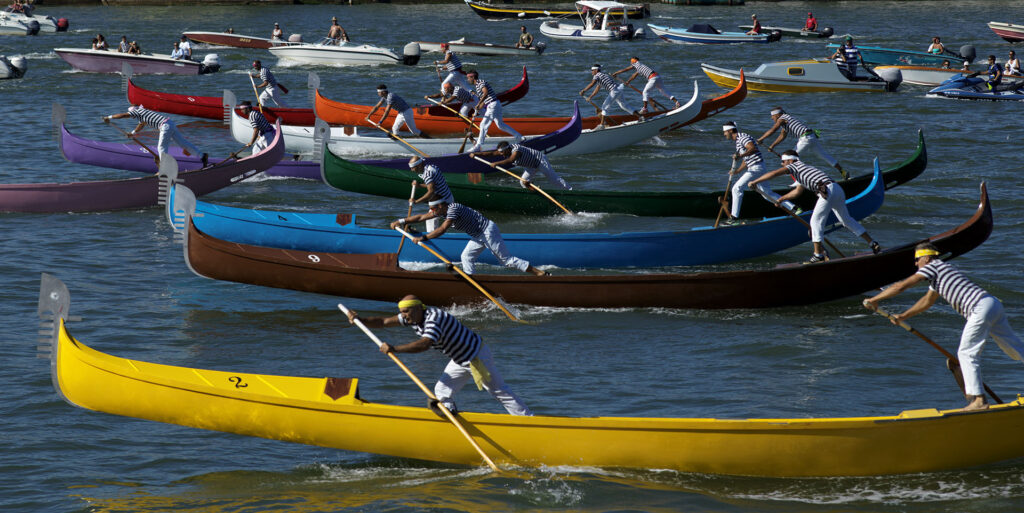
Eventually we saw the accompanying flotilla coming back, and sure enough, the pink gondola was still in the lead. But had they gone too hard too early? The white team was pressing them hard, and as they drew level with us it looked as if the pinks were losing strength. But they pulled out one last supreme effort and crossed the line first, to much applause. The physical strength involved in going so hard for so long must be considerable, and I have to say that the pink blokes were a couple of very fit and strong-looking chaps.
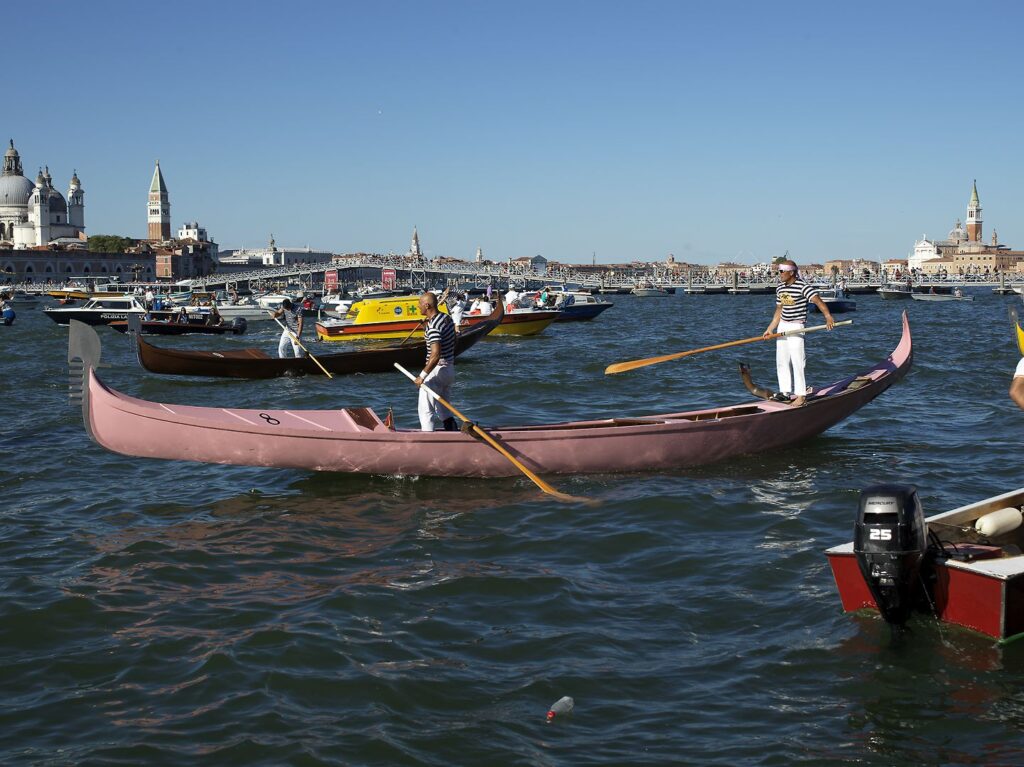
That evening there were more ceremonies and a service at the Church of Redentore, accompanied as so often in Italy by representatives of the state. In this case these included Carabinieri, some of whom were resplendent in ceremonial uniforms, and a nattily-dressed officer of the Alpini, the much-loved alpine brigades of the Italian Army.
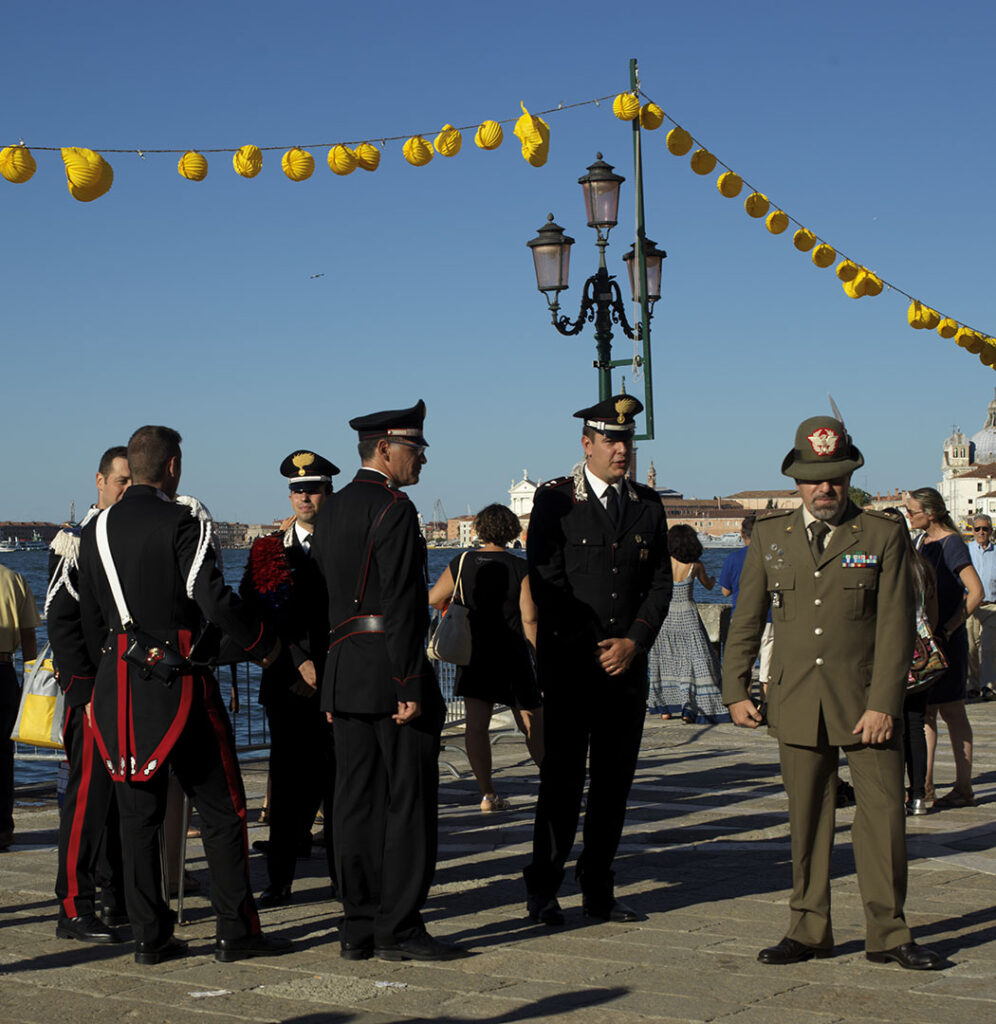
As dusk fell we went for a last walk across the pontoon bridge before it was closed at 10pm, thus cutting us off – or if you like, thus cutting off the rest of Italy from Giudecca. The evening was warm, the fading light was golden, and everything felt very peaceful.
That was in 2017. The Festa del Redentore went ahead in 2020 – a more subdued affair by all accounts in the shadow of the COVID-19 pandemic. The key elements were there though: the gondola races and the commemoration of the city’s recovery from a deadly infection over four hundred years ago. Long may it continue so.
